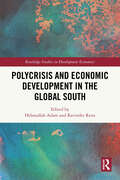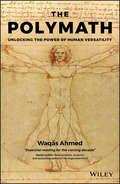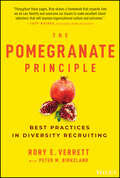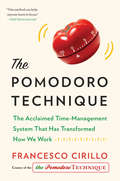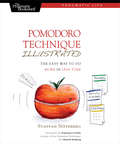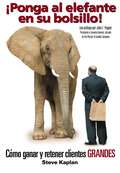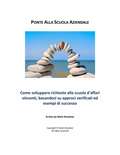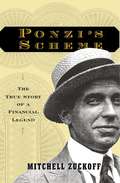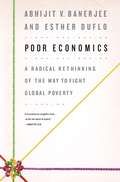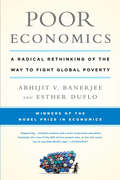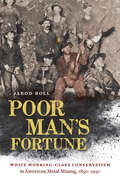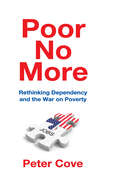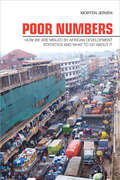- Table View
- List View
Polycom's Acquisition Process
by Michael A. Roberto Gina M. CarioggiaDescribes the acquisition decision-making process employed at Polycom. Focuses on the potential acquisition of the firm's archrival, Picturetel, in mid-2001.
Polycrisis and Economic Development in the Global South (Routledge Studies in Development Economics)
by Hebatallah Adam Ravinder RenaGlobal polycrisis refers to the simultaneous occurrence of multiple interconnected crises. It is marked by the convergence and interaction of combined events, such as geopolitical tensions, economic instability, environmental degradation, public health emergencies, and social disturbance. In this context, this book explores the challenges and opportunities encountered by the Global South amid political instability, climate change, humanitarian crises, technological advancements, and regional cooperation.The book adopts a multidisciplinary framework, integrating theoretical studies with empirical cases from various southern regions in Africa, Asia, and Latin America. This approach helps to foster an in-depth understanding of the complex challenges associated with development in these regions. The book emphasizes the perspectives and experiences of Global South countries, providing a platform for their voices to be heard. This allows readers to gain a more nuanced understanding of the unique contexts, perspectives, and successful experiences of countries in Africa, Asia, and Latin America. Furthermore, it investigates issues such as governance, security, migration, development, and emergent technologies, illuminates the role of regional organizations in fostering regional integration, peace, and stability and ultimately, provides a comprehensive and refined analysis of the Global South that challenges prevalent stereotypes and offers new perspectives on the world’s complex realities today. It includes case studies that enhance the practical relevance of the book, offering real-world examples that illustrate the theoretical concepts and highlightingsuccessful approaches to addressing development challenges.The book will appeal to scholars, researchers, and students interested in comprehending and addressing the challenges encountered by the Global South in a time of global polycrisis.
Polyface: The Farm of Many Faces
by Deishin Lee Stephanie Van SiceThis case explores a method of value creation through exploiting synergies that exist in an environment where there is diversity. The context of the case is a farm where biodiversity is leverage to create value. This is contrasted to industrial farming which operates on the principles of economies of scale. The case also provides an opportunity for students to discuss the environmental impact of different types of operating systems.
The Polymath: Unlocking the Power of Human Versatility
by Waqas AhmedEvery human is born with multifarious potential. Why, then, do parents, schools and employers insist that we restrict our many talents and interests; that we 'specialise' in just one? We've been sold a myth, that to 'specialise' is the only way to pursue truth, identity, or even a livelihood. Yet specialisation is nothing but an outdated system that fosters ignorance, exploitation and disillusionment and thwarts creativity, opportunity and progress. Following a series of exchanges with the world’s greatest historians, futurists, philosophers and scientists, Waqas Ahmed has weaved together a narrative of history and a vision for the future that seeks to disrupt this prevailing system of unwarranted ‘hyper-specialisation.’ In The Polymath, Waqas shows us that there is another way of thinking and being. Through an approach that is both philosophical and practical, he sets out a cognitive journey towards reclaiming your innate polymathic state. Going further, he proposes nothing less than a cultural revolution in our education and professional structures, whereby everyone is encouraged to express themselves in multiple ways and fulfil their many-sided potential. Not only does this enhance individual fulfilment, but in doing so, facilitates a conscious and creative society that is both highly motivated and well equipped to address the complexity of 21st century challenges.
PolyMedica Corp. (A)
by David F. Hawkins Jacob CohenThe Securities and Exchange Commission and investors question PolyMedica Corp.'s practice of capitalizing rather than expensing of direct-response advertising.
Polyphonic HMI: Mixing Music and Math
by Jehoshua Eliashberg Julian Villanueva Anita ElberseIn 2003, Mike McCready, CEO of Barcelona-based Polyphonic HMI, was preparing to launch an artificial intelligence tool that could create significant value for music businesses. The technology, referred to as Hit Song Science (HSS), analyzed the mathematical characteristics of music and compared them to characteristics of past music hits, making it possible to determine a new song's hit potential. McCready must decide on a target market--record companies, producers, or unsigned artists--and develop a marketing plan that helps overcome the likely resistance against adoption.
Polysar Ltd.
by Robert L. SimonsCanada's largest chemical company produces and markets butyl rubber in two divisions, each treated as a profit center. The new plant in the North American Division operates below capacity resulting in a significant volume variance and an operating loss. The European Division is at capacity and is profitable. The actions of the European Division affect the capacity utilization of the North American Division. Includes divisional financial statements and interviews with the vice-presidents of each division.
The Pomegranate Principle: Best Practices in Diversity Recruiting
by Rory E. VerrettAttract and retain the best and brightest professionals with these effective strategies for diverse talent recruitment In The Pomegranate Principle: Best Practices in Diversity Recruiting, veteran executive search consultant and DEI expert Rory Verrett writes with clarity and expertise about the best practices in recruiting and retaining diverse talent for your organization. He offers proven, tangible solutions and accessible strategies for making the recruitment and retention of diverse talent the centerpiece of your diversity, equity, and inclusion (DEI) vision. Divided into three sections, the book begins with a critical examination of the realities of the 21st-century talent pool, and why, without a detailed strategy, it can be challenging for companies and organizations to recruit diverse talent. The author goes on to explain, in detail, a collection of commonly employed strategies that usually serve to hinder—rather than further—organizations’ DEI efforts. Finally, the book concludes with proven and innovative techniques and tools you can implement immediately to start recruiting diverse talent. You’ll also find: A hiring handbook for leaders and hiring managers at companies, startups, professional services firms, nonprofits, and universities Strategies that anyone can use to advocate for and promote DEI initiatives at their place of work The benefits of tapping into the productivity, innovation, and creativity of talent from different generations, ethnic groups, genders, and life experiencesAn effective and hands-on resource for hiring managers, Chief Human Resources Officers, Chief Diversity Officers, and other executives and business leaders, The Pomegranate Principle belongs on the bookshelves of every leader who aims to position their organization for success going forward.
The Pomodoro Technique: The Acclaimed Time-Management System That Has Transformed How We Work
by Francesco CirilloAvailable through bookstores for the first time, the internationally acclaimed time management system that has been used by millions, written by Francesco Cirillo, creator of the Pomodoro Technique. Francesco Cirillo developed his famed system for improving productivity as a college student thirty years ago. Using a kitchen timer shaped like a pomodoro (Italian for tomato), Cirillo divided the time he spent working on a project into 25-minute intervals, with 5-minute breaks in between, in order to get more done, without interruptions. By grouping a number of pomodoros together, users can tackle a project of any length, and drastically improve their productivity, enhance their focus, and better achieve their goals. Originally self-published, and shared virally online, this new publication of The Pomodoro Technique includes several new chapters on how teams can use the pomodoro method to save time and increase productivity. The process underlying Cirillo’s technique includes five stages: planning the day’s tasks, tracking your efforts, recording your daily activities, processing what you have done, and visualizing areas for improvement. With this tried and tested method, readers can simplify their work, find out how much time and effort a task really requires, and improve their focus so they can get more done in the same amount of time each day.
Pomodoro Technique Illustrated: The Easy Way to Do More in Less Time
by Staffan NotebergPrinted in full color.Do you ever look at the clock and wonder where the day went? You spent all this time at work and didn't come close to getting everything done. Tomorrow try something new. Use the Pomodoro Technique to work in focused sprints throughout the day. In Pomodoro Technique Illustrated, Staffan N teberg shows you how to organize your work to accomplish more in less time. There's no need for expensive software or fancy planners. You can get started with nothing more than a piece of paper, a pencil, and a kitchen timer.You have so much you need to accomplish today. Your list is a mile long and you find yourself getting interrupted every other minute. You'd like to tell everyone to leave you alone, but most of the interruptions are coming from you! You think of a phone call you need to make or a web site you need to check and before you know it you're answering email, checking twitter, and finding a million other things to occupy your time.You need to focus---really focus.The Pomodoro Technique puts you back in charge of your day. You'll apply successful techniques from software engineering to identify what you should be doing today and to help you achieve your goals. Your mind won't wander when it is fully engaged in short bursts of focused activity. Learn to work less and accomplish more using nothing more than paper, pencil, and a simple kitchen timer.Set the timer and start on your next Pomodoro. When the bell rings take a break. This personal approach to timeboxing is at the core of the Pomodoro technique and this book is filled with advice on how get started and how to tailor it to your own needs.
Pon Más Tiempo a Tu Favor: Cómo autogestionarte en un mundo dominado por distracciones, que exige hacer demasiado a la vez.
by Jan YagerEsta es la segunda edición actualizada de un libro único sobre gestión del tiempo que va más allá del enfoque típico "haz esto, haz aquello", para ayudar a los lectores a pensar acerca de las "grandes" preguntas tales como "¿Cuál será tu legado?". Los lectores aprenderán el factor #1 que pueden controlar para convertirse en visionarios, implementando la técnica exclusiva de la autora: P. I. E., lidiando con derrochadores del tiempo comunes, como la procrastinación y la planificación escasa, e incluso consideraciones culturales que impactan en la forma en que los lectores gestionan su tiempo. La doctora Yager es una socióloga, consultante de negocios y empresaria que es la autora de siete libros sobre gestión del tiempo incluyendo Llevando la Gestión del Tiempo a los Profesionales IT: El Manual de una Entrenadora (Paquete).
Poner en orden: Haz las cosas sin esfuerzo
by Trey WoodsProbablemente haya visto muchos programas en la televisión sobre cómo las personas acumulan varios artículos diferentes, ya sea porque les encanta comprar o porque han recopilado muchos artículos a lo largo del tiempo y no pueden soportar separarse de ellos. Llega al punto en que sus armarios e incluso sus casas enteras se llenan por completo, y es casi imposible moverse. Es posible que conozca a personas así en su propia vida, o tal vez, sea una de estas personas. Si está leyendo este libro, asumiré que el desorden en su espacio se está apoderando de su vida. Quizás se pregunte cuál es el problema. Entonces, ¿qué pasa si yo, o cualquier otra persona, recolectamos muchos artículos? Bueno, las cosas son tuyas y tienes todo el derecho a hacer lo que quieras con ellas. Sin embargo, lo que quiero abordar son los problemas psicológicos que resultan en la acumulación de desorden en su vida, así como los efectos que el mismo desorden tiene en su psique a largo plazo. En este libro aprenderá: ✓ El desorden en tu vida ✓ Por qué tiene desorden ✓ Por qué no reconoce lo que es el desorden ✓ No sabe cuánto tiempo debe conservar algo ✓ Por qué está comprando demasiadas cosas que no necesita ✓ Las consecuencias de demasiado desorden ✓ Romper su relación con "cosas" ✓ Superar el efecto de la dotación ✓ Los beneficios de ordenar ✓ Ordenar es igual a un mayor enfoque y productividad ✓ Ordenar y mejorar la salud ✓ Desafío de limpieza de 6 semanas ¡Y mucho más! Si bien ordenar puede ser muy difícil al principio, también puede ser muy liberador y tener un impacto positivo en su vida en todos los sentidos. En este capítulo, repasaré varias técnicas diferentes para que pueda comenzar a reducir sus artículos personales o reorganizarlos de manera adecuada. De cualquier manera, su hogar y espacio de trabajo se
¡Ponga al elefante en su bolsillo!: Cómo ganar y retener clientes GRANDES
by Steve KaplanUn libro acerca del pensamiento estratégico y una actitud exitosa para el negocio, ¡Ponga al elefante en su bolsillo! está lleno de estrategias prácticas sobre mercadotecnia y ventas para ayudarlo a obtener un consumidor gigante, su propio elefante, e incrementar en forma dramática los ingresos, las ganancias y el éxito.
Ponte Alla Scuola Aziendale
by Simona Leggero Mark DresdnerPratico, partecipativo e una guida collaudata per aiutare i candidati alla scuola aziendale per l'entrata nella scuola di loro scelta. Le attività e gli esempi non solo vi guideranno in un processo di richiesta facile e più veloce, ma vi aiuteranno ad entrare nella scuola dei vostri sogni.
Ponzi: The Incredible True Story of the King of Financial Cons
by Donald DunnJust who was the man whose name has become synonymous with the classic “rob-Peter-to-pay-Paul” scam in which money from new investors is used to reward earlier ones? In December 1919, he was an unknown thirty-eight-year-old, self-educated Italian immigrant with a borrowed two-hundred dollars in his pocket. Six months later, he was Boston’s famed “wizard of finance,” lionized by the public and politicians alike. Based on exclusive interviews with people who knew Charles Ponzi, lent him their money, and exposed him, Donald Dunn’s Ponzi recreates both one of America’s most notorious and colorful financial con artists and the mad money-hungry era in which he thrived.
Ponzimonium: How Scam Artists Are Ripping Off America
by U. S. CommodityPonzimonium is a book chock-full of advice to educate investors on the scam artists ripping off America. The primary message is that investors should not spend on unregulated companies or individuals who trade unregulated markets-background checks are priceless. The book tells provocative stories such as that of Darren Potter, who cleverly categorized investments in his program as "loans” and ironically became a victim himself of a Ponzi scheme.There is an "Investor Bill of Rights” that pushes investors to question fund lock-up clauses and warns them to be careful of those who do not properly explain obligations and fund expenses, require additional investment capital at a future point in time, or have not appropriately disclosed all risks. Some of the red flags called out in Ponzimonium include a fund’s need for secrecy and whether there are abnormal methods of accepting investments or whether conducting independent research on the fund is difficult. This is a must-read for anyone new or old to investing and the pitfalls that could make or break your bank.
Ponzi's Scheme: The True Story of a Financial Legend
by Mitchell ZuckoffIt was a time when anything seemed possible--instant wealth, glittering fame, fabulous luxury--and for a run of magical weeks in the spring and summer of 1920, Charles Ponzi made it all come true. Promising to double investors' money in three months, the dapper, charming Ponzi raised the "rob Peter to pay Paul" scam to an art form. At the peak of his success, Ponzi was raking in more than $2 million a week at his office in downtown Boston. Then his house of cards came crashing down ...
Poor Economics
by Abhijit Banerjee Esther DufloWinner of the 2011 Financial Times/Goldman Sachs Best Business Book of the Year AwardBillions of government dollars, and thousands of charitable organizations and NGOs, are dedicated to helping the world's poor. But much of their work is based on assumptions that are untested generalizations at best, harmful misperceptions at worst.Abhijit Banerjee and Esther Duflo have pioneered the use of randomized control trials in development economics. Work based on these principles, supervised by the Poverty Action Lab, is being carried out in dozens of countries. Drawing on this and their 15 years of research from Chile to India, Kenya to Indonesia, they have identified wholly new aspects of the behavior of poor people, their needs, and the way that aid or financial investment can affect their lives. Their work defies certain presumptions: that microfinance is a cure-all, that schooling equals learning, that poverty at the level of 99 cents a day is just a more extreme version of the experience any of us have when our income falls uncomfortably low.This important book illuminates how the poor live, and offers all of us an opportunity to think of a world beyond poverty.Learn more at www.pooreconomics.com
Poor Economics: A Radical Rethinking of the Way to Fight Global Poverty
by Abhijit V. Banerjee Esther DufloThe winners of the Nobel Prize in Economics upend the most common assumptions about how economics works in this gripping and disruptive portrait of how poor people actually live. Why do the poor borrow to save? Why do they miss out on free life-saving immunizations, but pay for unnecessary drugs? In Poor Economics, Abhijit V. Banerjee and Esther Duflo, two award-winning MIT professors, answer these questions based on years of field research from around the world. Called "marvelous, rewarding" by the Wall Street Journal, the book offers a radical rethinking of the economics of poverty and an intimate view of life on 99 cents a day. Poor Economics shows that creating a world without poverty begins with understanding the daily decisions facing the poor.
Poor Man's Fortune: White Working-Class Conservatism in American Metal Mining, 1850–1950
by Jarod RollWhite working-class conservatives have played a decisive role in American history, particularly in their opposition to social justice movements, radical critiques of capitalism, and government help for the poor and sick. While this pattern is largely seen as a post-1960s development, Poor Man's Fortune tells a different story, excavating the long history of white working-class conservatism in the century from the Civil War to World War II. With a close study of metal miners in the Tri-State district of Kansas, Missouri, and Oklahoma, Jarod Roll reveals why successive generations of white, native-born men willingly and repeatedly opposed labor unions and government-led health and safety reforms, even during the New Deal. With painstaking research, Roll shows how the miners' choices reflected a deep-seated, durable belief that hard-working American white men could prosper under capitalism, and exposes the grim costs of this view for these men and their communities, for organized labor, and for political movements seeking a more just and secure society. Roll's story shows how American inequalities are in part the result of a white working-class conservative tradition driven by grassroots assertions of racial, gendered, and national privilege.
Poor Man's Fortune: White Working-Class Conservatism in American Metal Mining, 1850–1950
by Jarod RollWhite working-class conservatives have played a decisive role in American history, particularly in their opposition to social justice movements, radical critiques of capitalism, and government help for the poor and sick. While this pattern is largely seen as a post-1960s development, Poor Man's Fortune tells a different story, excavating the long history of white working-class conservatism in the century from the Civil War to World War II. With a close study of metal miners in the Tri-State district of Kansas, Missouri, and Oklahoma, Jarod Roll reveals why successive generations of white, native-born men willingly and repeatedly opposed labor unions and government-led health and safety reforms, even during the New Deal. With painstaking research, Roll shows how the miners' choices reflected a deep-seated, durable belief that hard-working American white men could prosper under capitalism, and exposes the grim costs of this view for these men and their communities, for organized labor, and for political movements seeking a more just and secure society. Roll's story shows how American inequalities are in part the result of a white working-class conservative tradition driven by grassroots assertions of racial, gendered, and national privilege.
Poor No More: Rethinking Dependency and the War on Poverty
by Peter CoveIn the 1960s, America set out to end poverty. Policy-makers put forth an unprecedented package of legislation, funding poverty programs and empowering the poor through ineffectual employment-related education and training. However, these handouts produced little change, and efforts to provide education and job-training proved inconsequential, boasting only a 2.8 percent decrease in the poverty rate since 1965. Decades after the War on Poverty began, many of its programs failed. Only one thing really worked to help end poverty-and that was work itself, the centerpiece of welfare reform in 1996. Poor No More is a plan to restructure poverty programs, prioritizing jobs above all else. Traditionally, job placement programs stemmed from non-profit organizations or government agencies. However, America Works, the first for-profit job placement venture founded by Peter Cove, has the highest employee retention rate in the greater New York City area, even above these traditional agencies. When the federal government embraced the work-first ideal, inspired by the success of America Works, welfare rolls plummeted from 12.6 million to 4.7 million nationally within one decade. Poor No More is a paradigm-shifting work that guides the reader through the evolution of America's War on Poverty and urges policy-makers to eliminate training and education programs that waste time and money and to adopt a work-first model, while providing job-seekers with the tools and life lessons essential to finding and maintaining employment.
Poor Numbers: How We Are Misled by African Development Statistics and What to Do About It (Cornell Studies in Political Economy)
by Morten JervenOne of the most urgent challenges in African economic development is to devise a strategy for improving statistical capacity. Reliable statistics, including estimates of economic growth rates and per-capita income, are basic to the operation of governments in developing countries and vital to nongovernmental organizations and other entities that provide financial aid to them. Rich countries and international financial institutions such as the World Bank allocate their development resources on the basis of such data. The paucity of accurate statistics is not merely a technical problem; it has a massive impact on the welfare of citizens in developing countries. Where do these statistics originate? How accurate are they? Poor Numbers is the first analysis of the production and use of African economic development statistics. Morten Jerven's research shows how the statistical capacities of sub-Saharan African economies have fallen into disarray. The numbers substantially misstate the actual state of affairs. As a result, scarce resources are misapplied. Development policy does not deliver the benefits expected. Policymakers' attempts to improve the lot of the citizenry are frustrated. Donors have no accurate sense of the impact of the aid they supply. Jerven's findings from sub-Saharan Africa have far-reaching implications for aid and development policy. As Jerven notes, the current catchphrase in the development community is "evidence-based policy," and scholars are applying increasingly sophisticated econometric methods-but no statistical techniques can substitute for partial and unreliable data.
The Poor Pay More: Consumer Practices of Low-Income Families
by David CaplovitzHas delineated with uncompromising, scientific evidence the brutal economic facts of existence for a group of low-income families in four New York City housing projects.

